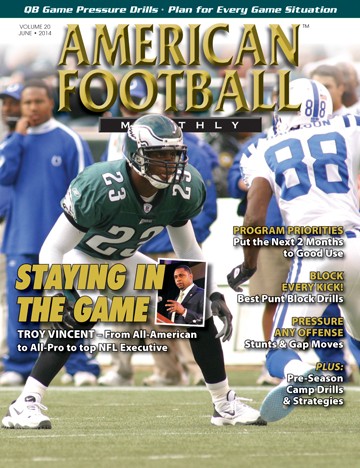Article CategoriesAFM Magazine
|
Put the Block On – Block circuit drills and one-on-one punt rush drills can increase your chances of blocking a punt.by: Robby CaseSpecial Teams Coach, University of Minnesota-Crookston © More from this issue Blocking punts takes not only personal belief and courage, but training and a good scheme to get the right player free to the punter. We teach the techniques necessary to properly block punts. We also practice different drills to train players to use those techniques plus a few scheme adjustments to try to get players free to the punter. I always tell the players that I want volunteers, not mercenaries. Mercenaries are people you hire to do a job; volunteers do it because they love it.
|
|
|||||||
| HOME |
MAGAZINE |
SUBSCRIBE | ONLINE COLUMNISTS | COACHING VIDEOS |
Copyright 2026, AmericanFootballMonthly.com
All Rights Reserved





